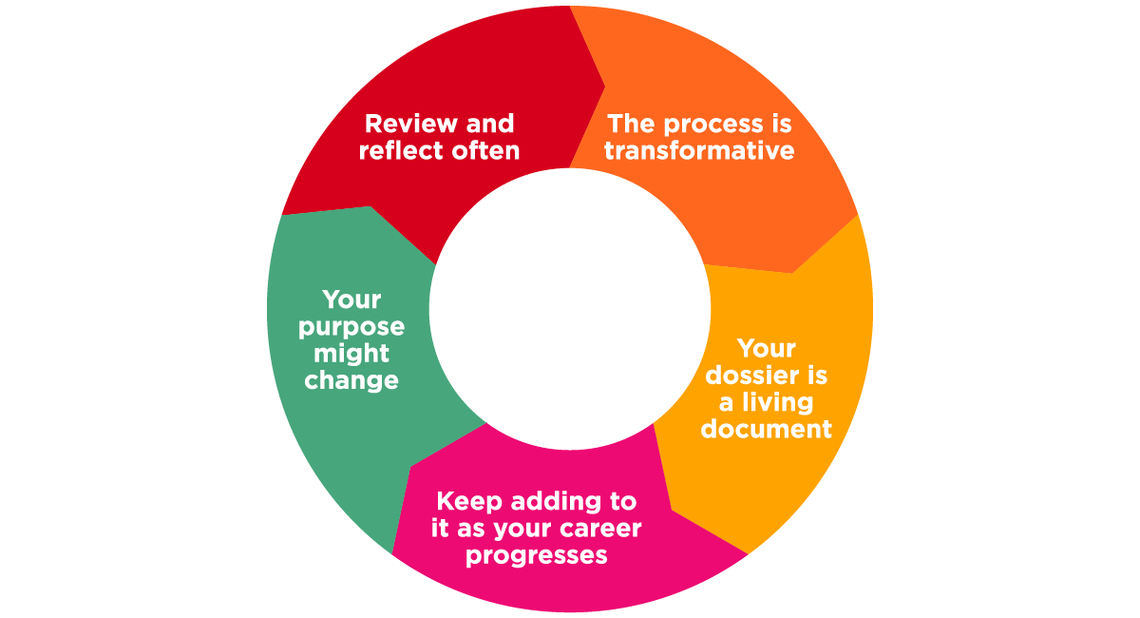
Lesson 6: Review and summarize
Activity
Speaking of peer-review, now is a great time to get some feedback on your teaching dossier! Could you exchange dossiers with a colleague? Ask your mentor to review it? You can also book a consultation with an educational developer or your teaching and learning centre.
Your dossier: A living document
You have read, reflected, and written a draft of your philosophy statement and a teaching dossier. You know about purpose, structure, evidence, and alignment of a philosophy statement and teaching dossier.
However, a teaching dossier is never quite complete. It is a living document! This means that not only will you revise it as you develop as a teacher, but that you can also adapt it to your changing needs. It is an iterative process and a good idea to revisit your dossier regularly.

References
Kenny, N., Berenson, C., Jeffs, C., Nowell, L., & Grant, K. (2018) Teaching philosophies and teaching dossiers guide. Calgary, AB: Taylor Institute for Teaching and Learning. Retrieved from: http://www.ucalgary.ca/taylorinstitute/resources/
Seldin, P., Miller, J. & Seldin, C. (2010). The teaching portfolio: A practical guide to improved performance and promotion/tenure decisions, (4th ed.). Jossey-Bass
Lesson checklist
- Create a summary and share your future teaching goals
- Assemble the appendices
- Review for alignment, format and update as needed



